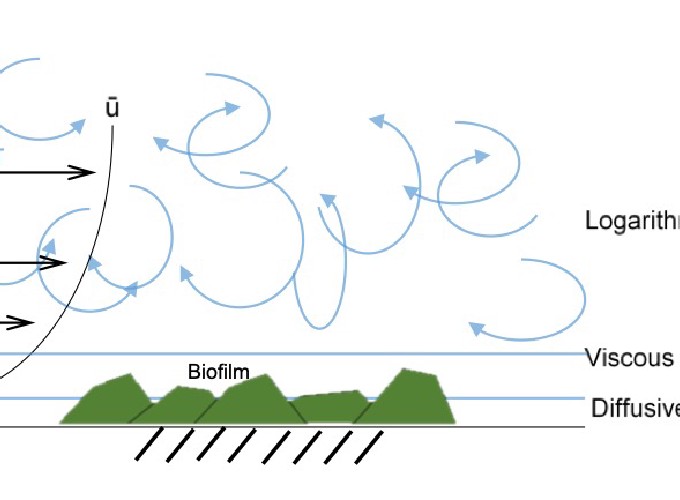Biofilm fouling is ubiquitous on ship hulls and other aquatic surfaces, such as corals and soft sediments. Biofilms increase drag on ships, reducing performance and increasing fuel use. Algal biofilms can impact ecosystem functioning as well, altering flow dynamics over coral reefs, for example. However, little is know about the effects of biofilm on boundary layer hydrodynamics. Because biofilms are compliant and have flexible protrusions from the surface (called streamers), interactions between biofilms and fluid flow are complex. I use high resolution Particle Image Velocimetry (PIV) to image and quantify the flow over biofilms in a high speed flow tunnel.
schematic of a biofilm in turbulent boundary layer flow. by E. Murphy
Biofilm hydrodynamics
 schematic of a biofilm in turbulent boundary layer flow. by E. Murphy
schematic of a biofilm in turbulent boundary layer flow. by E. Murphy
Biofilm hydrodynamics
Publications
Boundary layer hydrodynamics of patchy biofilms
Algal biofilms, ubiquitous in aquatic systems, reduce the performance of engineered systems and alter ecosystem processes. Biofilm …
Roughness effects of diatomaceous slime fouling on turbulent boundary layer hydrodynamics
Biofilm fouling significantly impacts ship performance. Here, the impact of biofilm on boundary layer structure at a ship-relevant, low …
The turbulent boundary layer structure over diatomaceous slime fouling
Biofilm fouling has a significant effect on ship performance. Here, the impact of biofilm fouling on boundary layer structure is …
